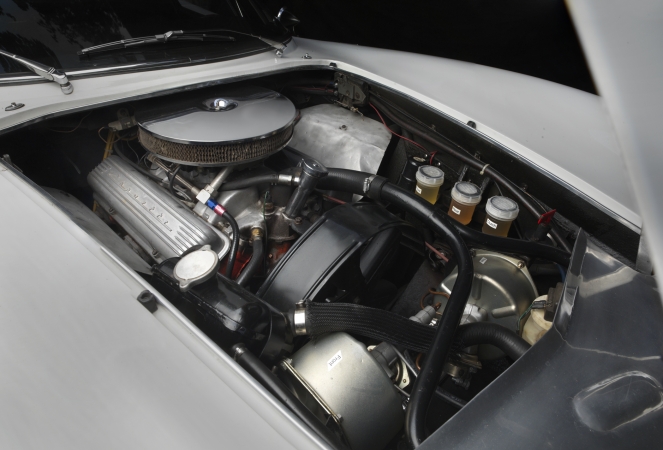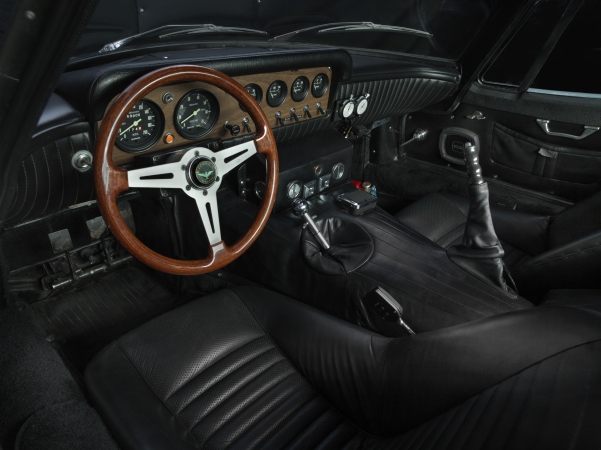Lender: Collection of Don and Diane Meluzio, York, Pennsylvania

1968 Bizzarrini 5300 Strada. Collection of Don and Diane Meluzio. Image © 2016 Peter Harholdt 
1968 Bizzarrini 5300 Strada. Collection of Don and Diane Meluzio. Image © 2016 Peter Harholdt 
1968 Bizzarrini 5300 Strada. Collection of Don and Diane Meluzio. Image © 2016 Peter Harholdt 
1968 Bizzarrini 5300 Strada. Collection of Don and Diane Meluzio. Image © 2016 Peter Harholdt
Sponsored by: Rick and Sarah English | Jess and Betty Settle
In the 1960s, when automotive enthusiasts turned entrepreneurs sought to produce their own cars and needed proper engineering and development guidance, Giotto Bizzarrini was the go-to talent. The fiery engineer was responsible for several of Ferrari’s most highly acclaimed models (such as the championship-winning 250 Testa Rossa and 250 GTO, to name just two), and was one of the individuals who left Enzo’s company in the infamous row of 1961. He first went to work with ATS and then set up his own consultancy, where his clients included Renzo Rivolta and Ferruccio Lamborghini.
With Rivolta, the founder of Iso, Bizzarrini was key to developing the ambitious, Corvette-powered Iso Rivolta GT 2+2 that debuted in 1962. The following year, he put his own stamp on the model that truly brought Iso lasting fame, the legendary two-seat Grifo. Bizzarrini’s concept of what the Grifo should look like and ultimately do was vastly different from patriarch Renzo Rivolta’s. While Rivolta wanted a comfortable high-performance GT (Gran Turismo) to take on the best from Ferrari, Maserati, and Aston, Bizzarrini envisioned a different a racing future for the vehicle. At the end of his consultancy, Rivolta gave Bizzarrini a chassis and said to go make the racing car himself.
That’s exactly what Bizzarrini did. That car, along with Iso’s own Grifo, debuted at 1963’s Turin Auto Show. Iso’s version was known as the Iso Grifo A3/L, and it was sleek, elegant, and luxurious. Its long hood and flowing fastback perfectly characterized what became known as “the Italian look.” Bizzarrini’s model was called the Iso Grifo A3/C (the “C” for Competizione, “competition”), which would later be called the Bizzarrini 5300 Strada. It had an aggressive shape with a sharp, pointed nose and low roofline so it would cut through the air like an arrow. To make the nose hug the ground, the engineer moved the engine so far behind the front axle that to access the distributor, one had to open a small lid on the top of the dash!
As it had done for Iso’s 2+2 GT, Carrozzeria Bertone designed both Grifos. Bertone was also blessed with good taste, a keen eye for design and design talent, and the ability to nurture stylists into industry stars. Perhaps nothing illustrates these qualities better than the presence of Bertone’s young styling chief at the time of the Grifo commission. Giorgetto Giugiaro was just twenty-five, and came from an artistic family of musicians and painters (his grandfather painted frescoes in churches and villas).
At that fateful 1963 Turin Show, both Giugiaro-designed Isos were tremendous hits. Bizzarrini sold the first Grifo A3/C on the Iso stand, and immediately started on the second with the proceeds. In total, he would make approximately twenty-five Grifos for Iso in his small workshop in Livorno. After he and Rivolta parted ways in the summer of 1965, he continued producing the cars as the Bizzarrini 5300 Strada. Aside from changing vents and taillight configurations, the Grifo/Strada’s radical shape remained basically untouched from 1963 to 1969. Some examples were equipped with a quartet of cross-flow Weber carburetors.
According to Bizzarrini, one of the main reasons his company went under was the inability to find a carrozzeria that could regularly and reliably provide the Strada bodies for production. Despite a few racing successes, the Strada succumbed to manufacturing limitations, only to become an exciting collector car decades later.
—Adapted from the exhibition catalogue essay by Winston Goodfellow
